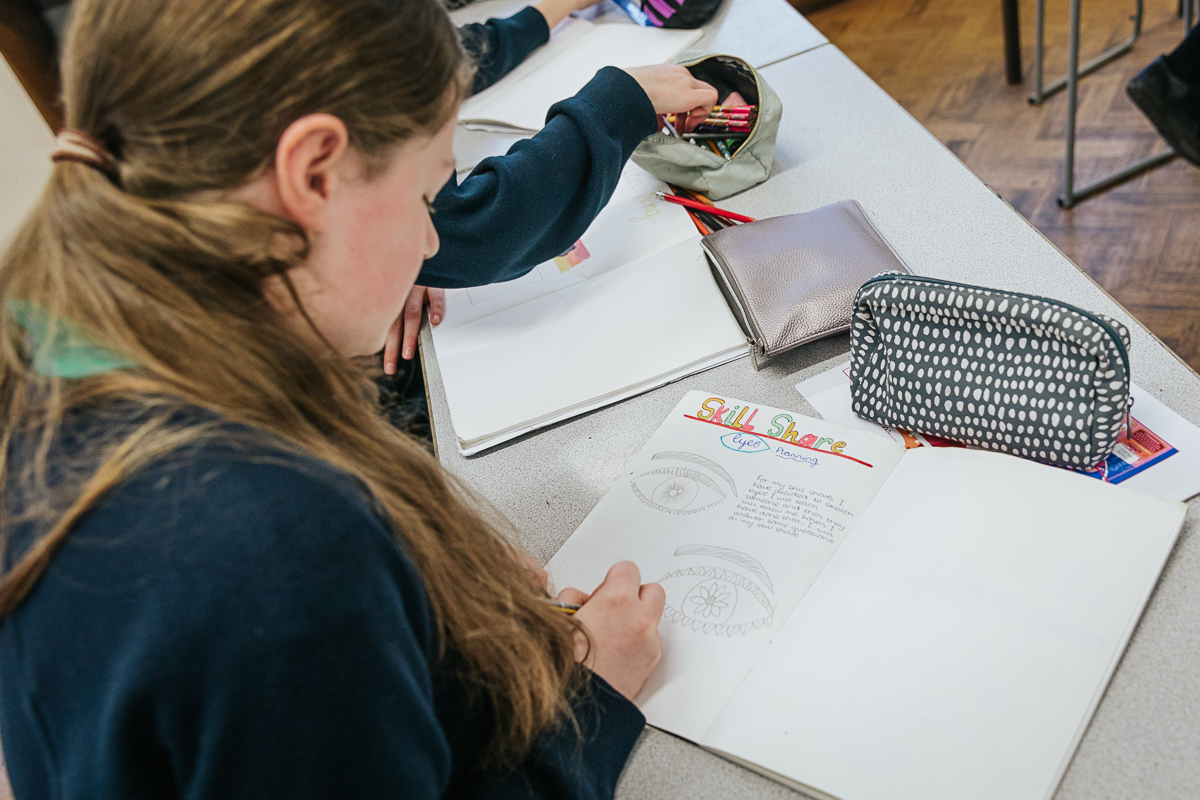
Ten top tips for a successful evidence template
BY: Kate Attard
08 Apr 2024
To launch our 'portfolio building and creative evidencing' theme on the blog this month, we share some tips from one of our earlier Trinity Champion Centres, Anthos Arts. As part of their Champion Centre role, they shared some advice about creating flexible portfolio templates that can work for a wide variety of contexts and young people. The 10 tips outlined below are based on creating resources for Bronze Arts Award, but the principles can be applied to other levels as well.
Ten steps to a successful Arts Award template
1 A successful template should provide opportunities for the young person to describe what art form or arts practice they are practically engaging in their chosen art form, but also why they are choosing to explore this area. Including both these areas allows a deeper level of reflection.
2 As well as documenting the what and why, portfolio templates should also support young people to reflect on what they have discovered/learned/developed as a consequence of the activity and how they could further expand their experience.
3 Description is a relatively small part of Arts Award and templates should try to pull the focus of the portfolio away from description and towards reflection. A way to try and prevent too much description being included is to incorporate a small box for descriptive information and ensure that other sections have more space for exploration, reflection and annotation.
4 We all know the joy of seeing a young person getting involved in their chosen art form, however sometimes this can lead them to forget to log evidence. Therefore, it is important that portfolio templates support a variety of evidence collection methods; from photography and video to programmes of events they’ve seen. Try to ensure that evidence building is embedded into the project process and not a last-minute addition.
5 Portfolio templates need to be flexible enough to adapt to the way the young person may wish to document their thoughts. One way you could consider supporting this is by presenting suggestions for the young person to choose how they document their learning, for example they could find photos that reflect what they have been doing and annotate them or they could buddy up with their peers to record a conversation which sums up a part of Arts Award.
6 A portfolio template should feel engaging and fun where possible. Although your approach will depend on your context, there are ways to make it feel personal without undermining the clarity of the template. One suggestion is to make the templates conversational, using small annotations or requests such as ‘discuss it with me’ and including memes that will make the young people chuckle as they scan the page.
7 A successful template should encourage interaction with the Arts & Cultural sector and introduce suggestions for wider resources for the young person to research themselves. It is important to include the young persons’ independent exploration work, but the adviser can support this by introducing/signposting them to current artists/art work that will inspire them.
8 A successful portfolio template should be easy to understand. If it takes more than five minutes for the group to understand what they need to do to gather and present their evidence, then it’s not clear enough.
9 Be aware of young people’s needs when providing practical resources, making sure you have a clear and large font and, if helpful, avoid a white background. Share the templates whilst the young people are already engaged in their activities and reflections so that the evidencing process is embedded into the session.
10 Arts Award is not about assessing artistic talent but rather young people’s learning journeys with assessment criteria such as creativity, communication, art form knowledge and understanding. Hence, Arts Award is metacognitive - about learning to learn, and is focussed on self-evaluation and confidence building. That’s what any good portfolio template should provide the opportunity to recognise, evaluate and develop the young person's knowledge of their chosen art form.
If you are still feeling stuck and want further support with creating portfolios the Arts Award team have a range of resources and support you can access. Check out artsaward.org.uk/evidence for:
- Evidencing resources with examples of how other centres have created portfolios
- Tips on what platforms to use for digital portfolios
- Portfolios building templates for all levels
You can also get in touch if you need further advice.
Image: Newminster Middle School by Geoff Love

.jpg)

Comments & Replies